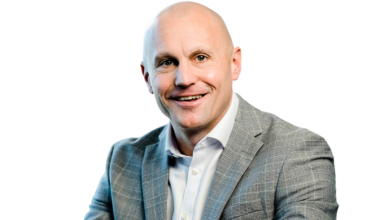Swiss Re reveals what is influencing the life insurance market

Swiss Re reveals what is influencing the life insurance market
re Insurance
Written by Kenneth Arullo
Higher interest rates are encouraging life insurers to acquire assets, marking a shift from years of low interest rates that prompted listed insurers to sell assets, often to private equity investors, according to new insights from Swiss Re.
He suggested that the current environment supports strong, profitable balance sheet growth, with Swiss Re forecasting a 40% increase in industrial investment income in key markets by 2027. Competition remains intense, with asset management capabilities developed during the low-yield years acting as a Assistant factor. Key differentiation and drive product innovation beyond traditional lifestyle offerings.
Swiss Re expects a 40% increase in insurance company investment income in the eight largest life markets over the next five years. Competition for assets between listed insurers and private equity owned insurers is intensifying as their business models converge.
Get the latest reinsurance news straight to your inbox twice a week. Register here
The ability to manage assets will be the primary differentiator in the race to acquire new assets, followed by attractive and competitive product offerings.
The current “higher for longer” interest rate environment is boosting life insurance demand, new business sales, investment performance, and profitability. Swiss Re expects a 40% increase in investment income, driven by rising bond yields, for insurers in the eight largest life markets by 2027.
Competition is intense between insurers to acquire and grow their assets, either through sales of new businesses or acquisitions of pools of assets from sectors such as pensions. Swiss Re noted that investment capabilities and core offerings will likely determine who advances; If competition remains rational, consumers should benefit from more attractive credit rates and diverse new offers.
Return to asset-intensive businesses
Life insurance companies are returning to asset-intensive businesses after struggling to generate positive returns during years of low interest rates. Swiss Re explained that return spreads on traditional life insurance products with fixed guarantees are more sensitive to interest rates, and insurers could benefit from holding more of these assets now that rates are higher.
Under low interest rates, listed insurers have faced unfavorable general market valuations for traditional businesses, with lower multiples given to spread-based income rather than fee-based income, such as “capital-light” products such as unit-linked offerings.
As a result, listed insurers have focused on capital-light businesses and offloaded traditional asset books, often to private equity firms. Swiss Re estimates that private equity-owned insurers now own approximately 25% of individual annuity obligations in the United States.
Insurers are tapping a new supply of portfolio-level deals and bundled annuities from companies and pension funds seeking to de-risk liabilities. In the UK, improving funding levels in defined benefit pension plans have led to record new purchases by the life industry, totaling £49 billion in 2023, an increase of 73% year-on-year, according to data from the Association of British Insurers.
Swiss Re highlighted that de-risking volumes are expected to peak in 2026-27, but increased regulatory scrutiny of funded reinsurance arrangements could slow activity growth in 2024/25. In the Netherlands, pension reform in 2023 has opened up a risk transfer market worth €1.5 trillion.
The business models of equity-owned life insurance companies and private equity are converging. Private equity-owned insurers are expanding direct retail sales, especially fixed annuities, to compete with traditional equity insurers. In 2023, they issued $58 billion in U.S. individual annuities, or roughly 18% of the industry’s total issuance of $320 billion, a double-digit increase since 2019.
Read more: Industry reduces the impact of natural disasters – Swiss Re
In Europe, where regulators have become more skeptical of private equity, its entry into the lifestyle sector has been slower. Swiss Re noted that traditional life insurers are finding alternative ways to retain their business to avoid asset stripping, such as using more captive insurers and raising institutional capital in affiliated special purpose vehicles called “side cars,” which transfer a portion of the risk to a third party. . Investors.
Asset management capabilities will be the number one differentiator in the race for assets. The “search for yield” in years with low rates has led to deeper integration between life insurance and asset management.
Major insurance companies have built sophisticated asset management departments, including expertise in private asset creation, and expanded their investment-related product offerings as policyholders bear greater investment risk. Mobilizing this asset management capacity to re-risk products and innovate will be key to successful asset acquisition.
Attractive and competitive product offerings will be your second differentiator. In the United States, high interest rates have supported a shift from variable to fixed savings products in the past two years. The next stage, if rates remain high, is likely to be re-risking of products, but insurers are being patient and cautious. In Europe, a full return to traditional business seems unlikely.
What do you think of this story? Feel free to share your comments below.
Get the latest reinsurance news straight to your inbox twice a week. Register here






Fetching comments…